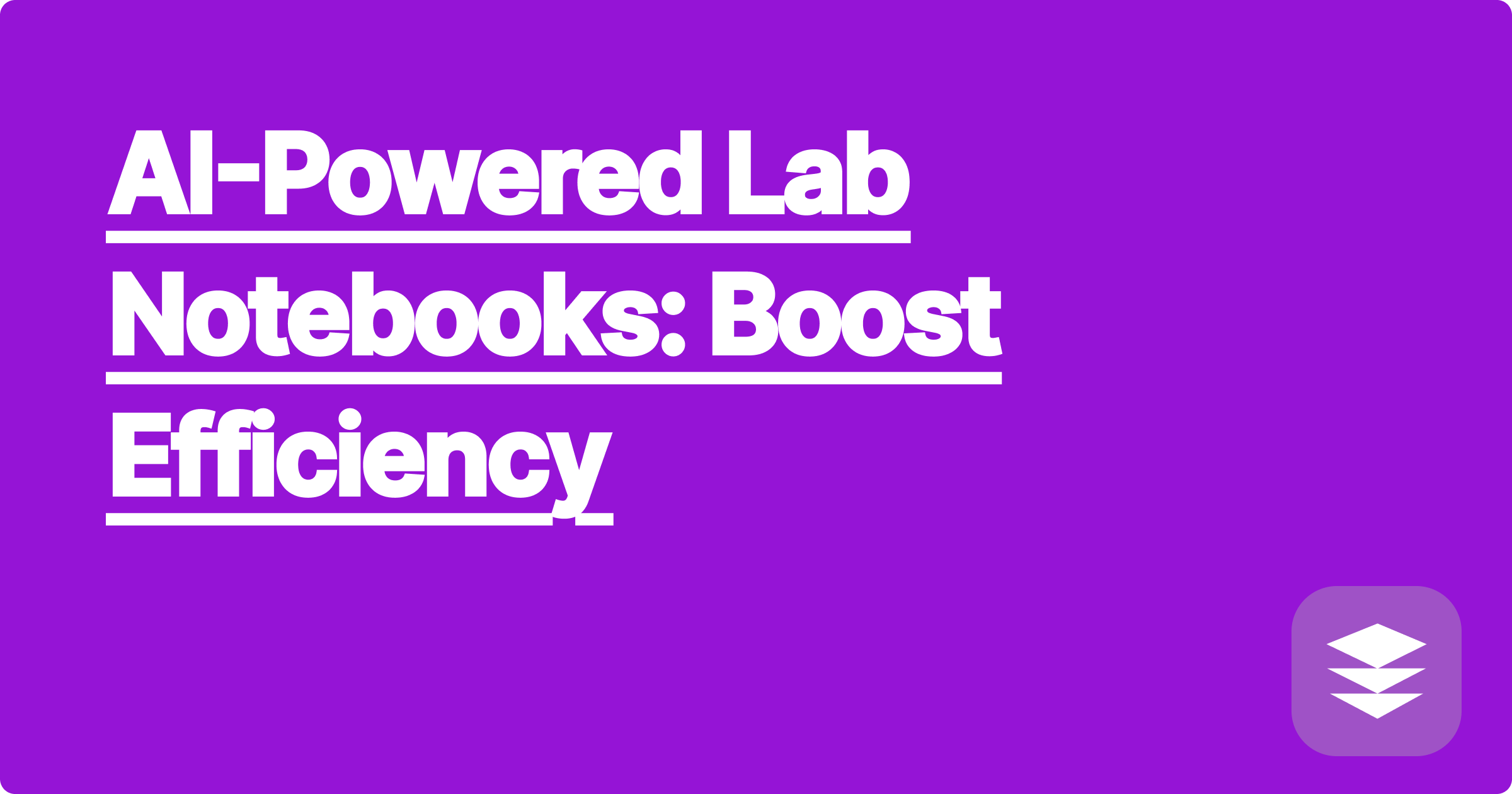
The world of STEM research is a demanding one, requiring meticulous data collection, analysis, and documentation. Traditional lab notebooks, while essential, can become cumbersome and time-consuming, often hindering the pace of discovery. Imagine spending hours meticulously transcribing data, creating graphs, and searching through pages of notes. What if there was a smarter, more efficient way? Enter AI-powered lab notebooks, a revolutionary approach that promises to boost productivity and transform the research landscape.
For STEM students and researchers, time is a precious commodity. Balancing coursework, experiments, and writing can be overwhelming. AI offers a powerful toolkit to streamline workflows, automate tedious tasks, and unlock valuable insights from data. This blog post delves into the practical applications of AI in the lab, focusing specifically on how AI-powered lab notebooks can revolutionize data analysis and visualization, ultimately freeing up more time for core research activities.
The traditional lab notebook, while a cornerstone of scientific practice, presents several challenges in the modern research environment. Manually recording data is prone to human error, especially during long experiments. Searching through handwritten notes for specific information can be tedious and inefficient. Furthermore, generating insights from complex datasets often requires specialized software and significant time investment. Visualizing data effectively for presentations and publications can also be a bottleneck. These inefficiencies accumulate, slowing down the research process and potentially delaying breakthroughs.
AI-powered lab notebooks offer a compelling solution to these challenges. These digital platforms leverage the power of artificial intelligence to automate data entry, perform complex analyses, and generate insightful visualizations. Imagine a lab notebook that automatically transcribes data from your instruments, identifies trends, and even suggests next steps in your experiment. Tools like ChatGPT and Claude can assist with literature reviews, summarizing research papers, and even brainstorming experimental designs. Wolfram Alpha can be invaluable for complex calculations, unit conversions, and accessing scientific data. By integrating these AI capabilities into a centralized platform, researchers can drastically reduce the time spent on manual tasks and focus on the more creative and analytical aspects of their work.
Transitioning to an AI-powered lab notebook can be seamless. Start by selecting a platform that aligns with your research needs. Many options are available, some specializing in specific disciplines like biology or chemistry. Once you've chosen a platform, import your existing data or begin recording new data directly within the system. Connect your instruments for automated data capture, eliminating manual transcription. Explore the platform's AI features, such as automated data analysis and visualization tools. Experiment with different visualization options to effectively communicate your findings. Finally, integrate the AI-powered lab notebook into your daily workflow, gradually replacing your traditional paper notebook.
Consider a biologist studying the growth rates of different bacterial strains. An AI-powered lab notebook can automatically record the optical density readings from a spectrophotometer, plot growth curves, and even perform statistical analysis to compare the growth rates. In chemistry, AI can analyze spectral data to identify unknown compounds and predict reaction outcomes. A physics student can use AI to model complex systems, analyze experimental data, and visualize simulations. For example, imagine using AI to analyze the trajectory of a projectile and compare it to theoretical predictions. These are just a few examples of how AI-powered lab notebooks can transform research across various STEM disciplines.
To maximize the benefits of AI in your research, start by identifying the most time-consuming tasks in your workflow. Focus on using AI tools to automate these tasks first. Experiment with different AI platforms and tools to find the ones that best suit your needs. Don't be afraid to explore new features and functionalities. Remember that AI is a tool to augment your research, not replace it. Critically evaluate the output of AI tools and use your scientific expertise to interpret the results. Finally, share your experiences with colleagues and contribute to the growing community of AI-powered researchers.
In my own research, I initially struggled with integrating AI tools into my workflow. I found some platforms to be overly complex or lacking the specific features I needed. However, through trial and error, I discovered tools that significantly improved my productivity. For instance, using AI to automate literature searches saved me hours each week. Sharing these experiences and learning from others is crucial for accelerating the adoption of AI in STEM research.
Embracing AI-powered lab notebooks is not just about keeping up with the latest technological trends; it's about fundamentally changing how we conduct research. By automating tedious tasks and unlocking powerful insights from data, AI empowers researchers to focus on what truly matters: pushing the boundaries of scientific discovery. Start exploring the possibilities today and unlock the full potential of your research. The future of STEM research is intelligent, efficient, and powered by AI.
AI Robotics Sim: Test Designs Efficiently
AI Quiz Maker: Personalized Learning
AI Biology Solver: Understand Concepts
AI for Research: Data Analysis Power
AI Essay Writer: Improve Your Writing
AI Algebra Solver: Get Unstuck Now!
AI Prep: Conquer STEM Challenges
AI-Powered Lab Notebooks: Boost Efficiency